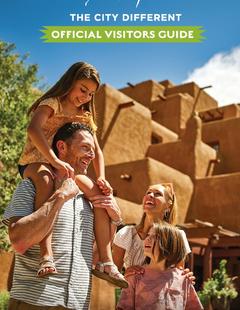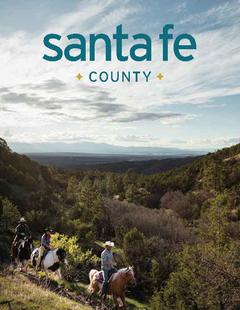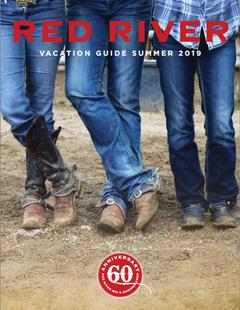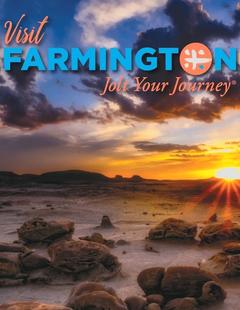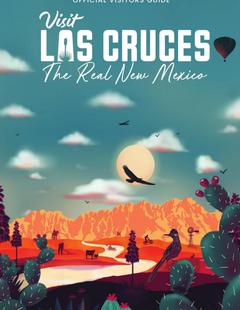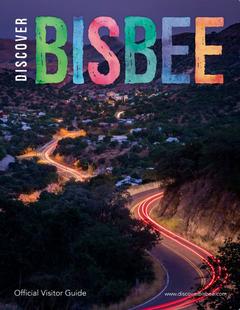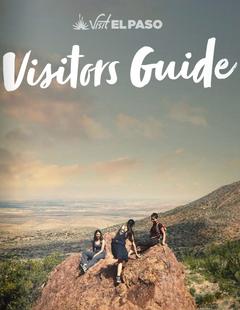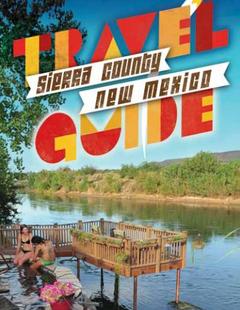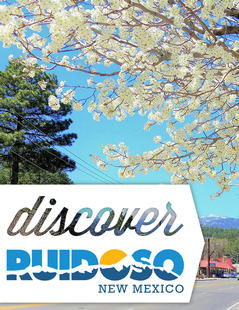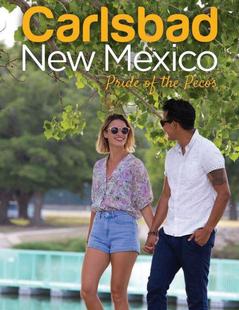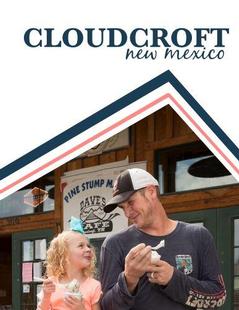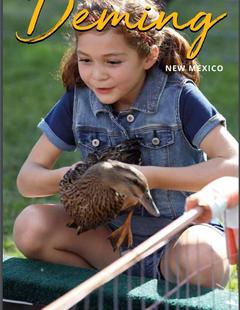Basics
- Length:
- 62 miles (99 km)
- Time:
- 2 hours, including backtracking, to drive the Byway
- Fees:
- There are no fees for driving the Byway.
Description
Travel the Turquoise Trail and discover a path packed with culture and history set in a landscape of mountains, canyons, forests, and rock formations. The route follows NM-14, leaving the busy interstates behind. Cover all the bases by seeing museums, cities, and scenery surrounding this route.
Two museums, Cerrillos Turquoise Mining Museum and the Museum of Archaeology and Material Culture, both feature displays related to south central New Mexico's history. Cerrillos Turquoise Mining Museum shows tools and artifacts from the region's mining history, which includes Native American, Spanish, and Anglo miners. Displays include artifacts and tools, such as photos, maps, rocks, gold pans, and more. Visit the Museum of Archaeology and Material Culture, featuring permanent archaeological and historical exhibits covering over 12,000 years of Native American history. One exhibit explores local turquoise mining, showing one of the sources for the Byway's apt name. For a change of scenery, stop at Tinkertown Museum and see one man's whimsical 22-room museum created over the course of 40 years. Over 50,000 glass bottles form the outside of the museum. Inside, magical carvings and figures displayed in miniature scenes fill the rooms, and antiques and hand-carved pieces line the walls.
Two of New Mexico's most famous cities await you, eager to offer cultural experiences unlike any other. Sitting in the Rocky Mountains, Santa Fe is surrounded by millions of acres of National Forest and public lands, giving access to a number of outdoor activities. Over 1,000 miles of trails in the Santa Fe National Forest provide opportunities for both relaxed and rigorous recreation. The trails also offer year-round adventure; you can hike in the summer or cross-country ski in the winter. With a history of over 400 years and a combination of Native American, Hispanic, and European cultures, Santa Fe's shopping and dining are deliciously diverse. Albuquerque, like Santa Fe, is a smorgasbord of culture. American Indian, Spanish, Anglo, African, and Asian people have all contributed their tastes in art, architecture, music, and food, as well as their religions, customs, and traditions.
The varied landscape of the area lends itself to standout scenery. The anomalous Garden of the Gods rock formation extends for miles on both sides of the Byway, and it is a great place to stop for a break and see one of nature's unusual creations. Over 70 million years ago, streams deposited horizontal beds of colorful sandstone and mudstone. Earth's movement gradually pushed the beds into their present vertical position. At the Sandia Peak Ski Area and Tramway, ride the scenic summer chairlift up Sandia Peak, then mountain bike down. In the winter, hit the slopes; 30 trails and four chairlifts satisfy all aptitude levels. Take the tramway and experience the 11,000 square mile panoramic view of New Mexico from atop Sandia Peak. Known as the world's longest tramway, the lift travels 2.7 miles from the base to the top of the mountain, suspended over desert, canyons, and forests.
Helpful Links
Points of Interest
Points of Interest Along The Way
Albuquerque (NM)
In 1706, Albuquerque was founded by a group of colonists who hadbeen granted permission by King Philip of Spain to establish a newvilla (city) on the banks of the Rio Grande (which means big orgreat river). The colonists chose a place along the river where itmakes a wide curve providing good irrigation for crops and a sourceof wood from the bosque and nearby mountains.
The growth of Albuquerque can be traced to two changes duringthe early development to the area. First, the Rio Grande movedfurther west causing a slight shift in the population. Second, therailroad came to Albuquerque in 1880, and a "New Town"
grewup along the tracks two miles east of Old Town. Populationincreases can also be attributed to Albuquerque becoming animportant stop on the Santa Fe Trail and the Camino Real.
Albuquerque never went through the lawless days of the frontieras did other western towns. When those times came (during the lastquarter of the 19th Century), Albuquerque already had anestablished culture a century-and-a-half old. Much of Albuquerque'sappeal today can be attributed to the subtle blending of the manycultures that comprise its fabric: American Indian, Spanish, Anglo,African, and Asian. Each left its mark in food, music, religion,art, customs, architecture, and traditions.
Directions
From Tijeras, take I-40 west to Albuquerque.
Cerrillos (NM)
The Cerrillos mining district is one of the oldest and most marked of the Old Spanish Mineral Developments in the Southwest. Still a thriving city, Cerrillos now serves as a reminder of the old west, complete with dirt streets and Southwestern charm.
Cerrillos Turquoise Mining Museum (NM)
A visit to the Mining Museum brings you to a private collectionand display, of tools, equipment, objects and artifacts used indaily life during the mining era of Los Cerrillos.
The museum is on the site of the old Palace Hotel where ThomasEdison stayed while working on gold experiments in the nearbymining district of old placers, and NM territorial governor LewWallace drafted his book Ben Hur. Rough riders were recruited hereto fight in Cuba following Teddy Roosevelt up San Juan hill.
Centuries ago, Native Americans mined this area for turquoise touse in trade and to make jewelry, some of which has been dated backto the 1200's. They also mined lead that was ground for paint andpottery glaze. Spanish explorers discovered these ancient diggingsand worked the mines during the 17th and 18th centuries. Anglominers toiled until early 1900's, when the mines became exhaustedand played out.
The equipment and artifacts found here include prehistorictools, photographs, maps, rocks, mineral samples, dry washers, goldpans, miners' lamps and drills. The museums' windows are a colorfuland intriguing collection of old medicine bottles and telegraphinsulators.
Cibola National Forest (NM)
Occupying three states and claiming four wildernesses, the Cibola National Forest provides endless recreational opportunities to visitors during all seasons.
Garden of the Gods Rock Formation (NM)
Visitors are welcome to stop here, take photos, and marvel at nature's handiwork. Vertical beds of colorful sandstone and mudstone of the Galisteo Foundation were deposited here in streams 70 million years ago. Deposited as horizontal sheets, they have been tilted to their present vertical position by mountain-building forces beneath the earth's surface. The formation extends for miles on both sides of the Byway and can even be seen from outer space.
Golden (NM)
Golden, now a ghost town, was the site of the first gold rush west of the Mississippi in 1825, before the California and Colorado gold rushes.
Madrid (NM)
An old mining town-turned artists' community, Madrid provides a unique experience for travelers as they tour the shops that were once old houses and company stores.
Old Coal Mine Museum (NM)
This former junkyard of old mining and railroad relics is now a treasured museum celebrated the areas mining and rail history.
Old Town (NM)
The historic village of Old Town creates a feeling of the 18th century, right in the center of Albuquerque. This restored village is now home to shops filled with fine artwork and jewelry made by local artisans, and authentic Mexican restaurants.
Directions
From Tijeras, take I-40 west to Albuquerque.
Sandia Cave (NM)
This cave, a designated National Historic Landmark, was an exciting find in the 1930s. This find contained evidence of at least three distinct prehistoric groups.














